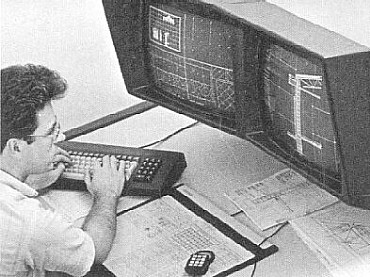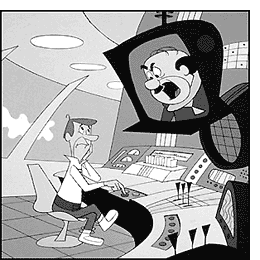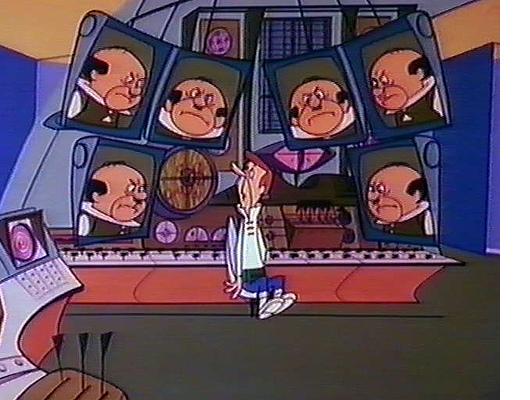2009.11.27 12:10
The current state of Architecture Theory
an (experimental inclined toward intuitive) architectural theory:
architectural design falls into three types:
intuitive architectural design
theoretical architectural design
experimental architectural design
with the three types forming a triade, thus each type can incline towards one or the other.
e.g.
the architecture of Frank Gehry -- intuitive architectural design inclined toward experimental architectural design
the architecture of Peter Eisenman -- experimental architectural design oscillating between theoretical and intuitive architectural design
the architecture of Le Corbusier -- theoretical architectural design oscillating between experimental and intuitive architectural design
Gothic architecture -- experimental architectural design inclined toward intuitive architectural design
Beaux Arts architecture -- theoretical architectural design oscillating slightly between experimental and intuitive architectural design
the architecture of Louis I. Kahn -- started as theoretical architectural design and ended as experimental architectural design inclined toward intuitive architectural design
the architecture of H&dM -- experimental architectural design inclined toward intuitive architectural design
the architecture of UNStudio -- theoretical architectural design inclined toward experimental architectural design
[to be continued]
2009.12.05 12:42
where's the avant garde?
Get a notion or idea
that most will resist,
and chances are
that it's avant garde.
2010.11.13 11:41
I'm apologizing in advance.
Perhaps the days of worthwhile-content-given-freely is steadily on the downswing (perhaps especially when given freely to an otherwise profitting site).
If worthwhile content received remuneration, there'd be lots of discourse.
2011.03.28
Is there a place to talk about crystal balls?
Perhaps sometime in the future all architects will come to realize that software which is "customization-friendly" is more valuable than software that is "user-friendly".
1999.06.24
"I, Marcel Duchamp, sometime (drag) artist, fully INTEND for this urinal to stand as a monument to all those who gleefully piss their time away wondering about art, particularly art like this. In the future, everyone will piss for fifteen minutes"
2000.03.16
In the future, if I ever don't 'get' something you write, give me a hint or two; you like riddles and I like hints.
2000.09.07
In the future, all reality will be recorded by a camera, because if it isn't captured by a camera, you can kiss that reality goodbye.
2003.02.23
In the future everyone will remember for fifteen minutes [and forget they ever heard of Rosemarie Trockel].
2003.03.17
In the future all curators will be famous for 15 minutes?
2003.06.23
Having now taken a closer look it is hard to say whether Koolhaas is smiling (or at least as close to a smile that Koolhaas can get to) because of Prada or because he just got to say on TV that perhaps in the future all architecture "will be embedded in a casino."
2003.07.13
"In the future, everyone will be in the spotlight."
2003.09.16
"In the future, everyone will only have five messages a week at artforum/talkback."
2003.10.19
Quondamopolis
city of once was in the future
where Undesigning Oblivion is always in style
2003.12.16
Sometime in the future, it would be great if art museums began exhibiting reenactments of the 'emporiums' that are site specific to the end of big museum exhibits. The one ending Manet and the Sea is simply hilarious. I want my beach towel depicting the Philadelphia Museum of Art and I want it now!!! Great for nudist camping.
2004.04.01
In the future, everyone will be imfamous for 15 hours.
2004.09.14
in the future
everyone
will type
with three fingers
2004.12.01
"In the future, everything will be an advertisement."
2005.02.01
"In the future, everything will be an advertisement [especially journalism?]."
2006.04.24
You know Clivedin is the only place I've seen an actual reenactment (of the Battle of Germantown). I liked how, after the battle, they had to put electric fans in the mansion windows to get all the gunpowder smoke out. Maybe some day in the future they'll reenact that!
2006.12.31
"In the future, everything (including what I wear) will be an advertisement."
2007.01.16
"In the future your whole life will be a phone call."
2007.01.24
"In the future, everyone will be a starchitect for fifteen minutes."
2007.02.19
Actually it's the attention deficit economy, hence, in the future, everything will be an advertisement.
2007.04.19
"In the future everything will be a reenactment (in cyberspace?)."
2007.08.19
In the future, everyone will be a self link, with absolutely nothing to be sorry about. Self link architects will be all the rage, even.
2007.10.03
Yes, in the future, every architect will have five seconds of fanfare playing as they turn around and cock their eye.
2008.05.16
In the future, all architecture will be post-modern for fifteen minutes."
2009.08.26
“All the world’s a next stage.”
2008.10.13
2011.01.08 11:00
...a virtual museum of architecture
collecting
a project
curation
critique
institutional critique, even (perhaps a virtual museum is what a real museum cannot be)
voices
continually reshaped
agendas
globally readable
cada coda
architecture as the delivery of content
In the future, 15 years of hypercritique will be famous.
| |
2011.01.11 12:53 13:00 13:06
dreaming of the future
Even when there’s nothing there, there’s the green flat land and the simple graduated fill sky. A landscape whose utter, terrifying banality we ignore so easily in our eagerness to get on with whatever task we have at hand. What if we just looked into this landscape. What would we see? What would we learn? This after all, is a model of the world. Maybe it’s the truest way of seeing the world as conceived by Google? Or perhaps it’s the real view of landscape after the Internet, or the surface of the planet as viewed by the military-industrial complex?
ugh, that^ is sooo 1983.

guess who, 1983.

"Stop dreaming of the future, and start drawing those minimal details!"

"And stop posting at archinect/forum. That's my job!"
| |
2011.01.28 10:26
7 Wonders (and a half) of POSTMODERN architecture?
Vanna Venturi House, 1959-64.
Piazza d'Italia, 1975-80.
Public Services Building (Portland), 1980-82.
AT+T Building, 1978-84.
seminal : highly original and influencing the development of future events
The Vanna Venturi House is the only seminal work within the above list. The rest are, at best, the apotheosis of Post-Modern architecture.
apotheosis : the ideal example; epitome; quintessence
Note the AT+T Building was complete a full 20 years after the Vanna Venturi House was complete. That's like relating a building completed today to a building completed in 1991!
2011.05.21 07:49
SMALL, BIG, FOG and LEONG LEONG
What we have 'now' (as you've provided evidence to above) is that Mountain Dwellings by BIG and Beekman Tower by FOG and Audi Urban Future by Leong Leong all have a past, a history if you will, that extends back beyond their own existence. Whether wittingly or not, the BIG, FOG and Leong Leong designs all relate (genealogy) back to respective Glen Small designs. (Just as John Stezaker's more recent collage work has a past that relates to some of my collage work from over 25 years ago.)
Conversely, what we also have 'now' (as you've provided evidence to above) is that Turf Town and Copy Cat Skyscrapers and Jungle Theater all have a future beyond their own existence. In this case completely unwittingly, the Glen Small designs all relate (is progeny the converse of genealogy?) forward to respective BIG, FOG and Leong Leong designs. (Just as some of my collage work from over 25 years ago relates forward to John Stezaker's more recent collage work.)
[Coincidentally, the movie I saw last night, The Double Hour, very much plays with the intermingling of a shared past and future, and, in the movie's case at least, the chaos that may well then ensue.]
It is quite common for designs to have a past that extends back beyond their own existence. And, conversely, it is more rare for designs to have a future that extends forward beyond their own existence. I'm not sure how much attention current architectural history pays explicitly to designs that have a future beyond themselves.
What's the best art 20 years from now? OR What's Glen Small designing these days?
[Does seeking precedents... ...finding inspiration play with the intermingling of a shared past and future?]
2011.09.09 08:31
Future Trends in Architecture
2000.09.09: ...Unthinking an Architecture [book] . . . the act of unthinking architecture allows . . . [a] free, spontaneous, and facile . . . modus operandi . . . utilize all the resources . . . as freely as possible.
...scale-rotate manipulation of the model collection . . . (the title could be Arbitrarily Unthinking an Architecture.) ...extrude portions of building plans that have been arbitrarily moved around in 3d.
An architectural Ulysses?
2001.09.09: In "Remembering to Forget" one learns that damnatio memoriae actually did more to make people remember than it did to make them forget. Officially and literally, the memory was erased, however, the act of erasure itself, like the scar that it is, only reinforces the real reality that once was. Yes, erasures ironically are very full of meaning...
2001.09.09: So which is the most valuable aesthetic when it comes to architecture?
Is 'what a building really is' that which is most valuable in terms of being the harbinger of architectural aesthetics?
or
Is the real harbinger of aesthetics the way in which architecture is presented (which is largely separate from the building itself)?
or
Is architectural aesthetics really only that non-tangible (or at least non-built) apparatus that sets up the presentation (of the image) and in turn more or less subliminally sets up the platform of appreciation within the minds of those receiving the image?
2003.09.08: It has also been written that "Less is a Bore." Correct me if I'm wrong.
Regarding Mies, however, it is true that less [walls] is more [windows]. Very 20th century!
Very 23rd century: less assimilation is more metabolic.
2005.09.09:
Maybe Roma Interrotta is really just still going on.
|